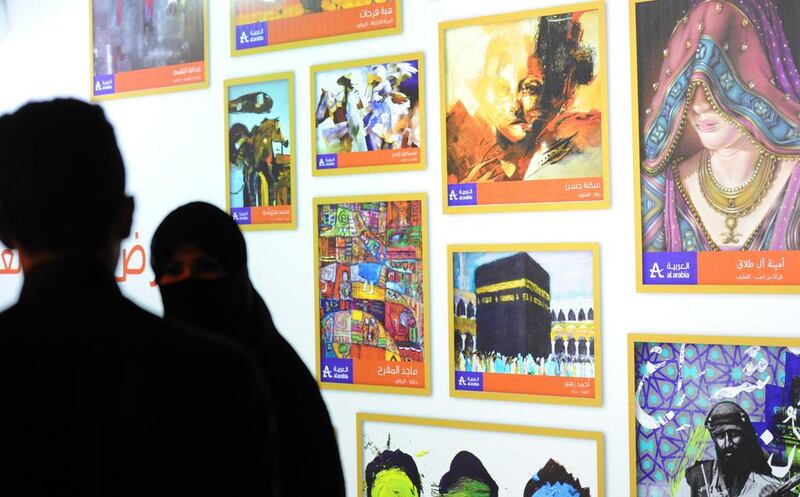RIYADH // In highly conservative Saudi Arabia where most forms of entertainment are forbidden, art has taken to the streets.
Dozens of paintings are being displayed on outdoor advertising billboards in the capital Riyadh and other cities in what organisers say is the kingdom’s first public art show.
“It is something new,” said Mohammed Al Khereiji, deputy chief executive of Al Arabia Outdoor, the advertising firm behind the exhibition.
The exhibition opened Monday night along Riyadh’s glitzy Tahlia Street and runs until Saturday.
Sculptures have previously been displayed outdoors in Saudi Arabia, including a permanent display along the corniche in Jeddah. The country also has some small galleries.
But with about 3,400 billboards showing 80 paintings by Saudi artists, Mr Al Khereiji called this latest show “the biggest art gallery in the Middle East”.
Saudi Arabia, which practises a conservative Salafist version of Islam, bans alcohol even in luxury hotels, does not allow cinemas or theatres, and strictly separates the sexes.
“The culture and the society do not encourage artists and it is difficult to be an artist in this society,” said Majed Saud Al Mefareh, 38, standing in front of a billboard featuring his painting, Story.
It is a patchwork of abstract figures and images depicting Saudi life and traditions.
Mr Mefareh, who also has a day job in administration, said he has been a part-time painter for about two decades because he enjoys his hobby and knows that “some people in our society like it” too.
The exhibition should help more Saudis to appreciate the visual arts, he said.
The paintings in the exhibition were chosen after a call for submissions drew 3,200 entries.
Most of the colourful works are in an abstract style, some reminiscent of early-20th century cubism made famous by Picasso.
The country’s strict Wahhabi version of Islam forbids paintings of the human form but several works in the exhibition clearly depict people, many of them women.
One painting shows a green female figure, hands on hips and head held high, emerging from a cactus in a desert landscape.
Ahlam Nassir Al Harbi, 23, said women are a minority among the country’s artists, making up perhaps 10 or 20 per cent of painters.
An art student at Princess Nora bint Abdulrahman University for women, Ms Al Harbi’s work shows two female forms alongside traditional Bedouin designs.
“It feels lovely” to have one of her paintings exhibited, she said.
* Agence France-Presse





